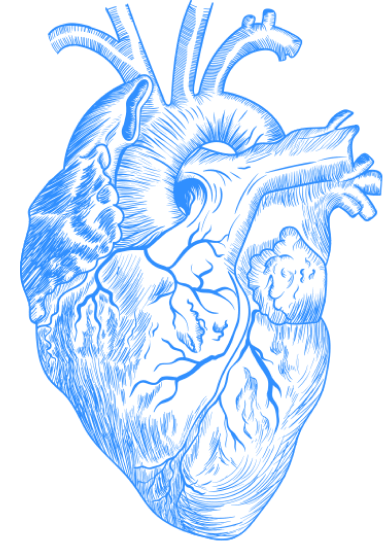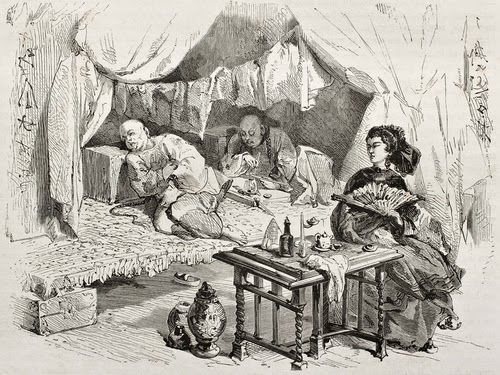
 |
| Image via Shutterstock |
I had just finished introducing myself to the resident when the EMTs wheeled in a patient on a stretcher. The patient’s face was completely pale and expressionless and his eyes were closed; his hair looked disheveled and unwashed. He wore tattered jeans, a soiled white t-shirt with holes, and white sneakers with untied shoelaces. His age, according to the EMTs, was 34, but he looked as if he were 50, with a sagging face and prominent wrinkles that no 34-year-old should have.
Other than this, we knew nothing about him. An anonymous person had called 911 and reported that this gentleman was “not awake.” This is not uncommon, as many folks who get into gunfights or use drugs do not want to be caught by police, and associate the medical profession with the law. As further contribution to our complete ignorance, the unconscious patient could not tell us what had happened.
Moreover, he was apneic, which means his breathing rate was dangerously slow. Without adequate oxygen intake, his heart and brain would perish. As I wrote about in my post on running a trauma code, one of the most important aspects of a patient’s care in the ED is the airway — physicians ensure that the system that takes in oxygen works. With diminished breathing, this patient needed oxygen. Thus, the ED resident rushed to set up tools for intubation: sticking a tube down the patient’s throat to provide a space for oxygen entry.
When a patient like this comes into the ED — unconscious with no clear history — the ED physicians give the patient a few basic drugs that can save his life. These therapies target the most common causes of AMS (altered mental status) or total lack of consciousness. One therapy is glucose or sugar administration. Hypoglycemia (low blood sugar) can affect a person’s mental status. The brain primarily uses glucose for its processes; without glucose, it starves, leading to unconsciousness. One of the other therapies is naloxone, also known as narcan. Naloxone is an opioid antagonist, a term that describes its inhibitory actions at opioid receptors in the nervous system. Opioid agonists include drugs like morphine and heroin that cause sedation and respiratory depression. Naloxone acts quickly to reverse these effects in patients who overdose on opioids.
A fellow student and I watched as the attending physician injected a dose of naloxone into the patient’s IV. The patient shot up in bed, trembling, sweating, and breathing rapidly, his eyes wide open. That’s the catch with the agonist and antagonist relationship: because their effects oppose each other, their manifestations also oppose each other. While opioids sedate, naloxone stimulates. The patient screamed at the nurses and physicians and threatened them. He hurled expletives at the healthcare staff and swung his arms at the nurses while demanding to leave the hospital, as spittle flew from his mouth.
The reason, as the attending ED physician explained to the patient, that they kept him in the hospital is that naloxone has a very short life in the body’s system and wears off in about an hour. But some opioids can be long-acting; ergo, this patient could become dangerously sedated again once the naloxone wore off. And he could not, given his mental status, make individual decisions for himself. The patient continued to thrash around until a police officer from another part of the ED came over. Not surprisingly, the patient calmed down.
Watching this elicits mixed emotions. What if this person did become more violent? Would I actually need, physically, to defend myself from this drugged individual — a man who clearly has little sense of what is and is not reckless and harmful? And then there’s sympathy; how unfortunate that such a young person could fall into a life of drugs. Further, what will his fate be? Will he ever give up using drugs? I also could not help but find it humorous that as soon as the police officer came into the room, the patient calmed down. The law and its enforcers have a potent effect, indeed. Lastly, this was an incredible physiologic feat of saving someone’s life using a drug with an antagonistic molecular construction — another wonder of modern medicine to put on the list of scientific achievements.
We may soon witness scenes like this in a more public sphere. The wonder that is naloxone is currently being distributed to police officers in big cities to use on people overdosing on opioids, according to The New York Times. The same thing is happening in New Jersey, too. Government agencies are responding to a rapid increase in the use of opioids: “Gov. Andrew M. Cuomo committed state money to get naloxone into the hands of emergency medical workers across New York, saying the heroin epidemic in the state was worse than that seen in the 1970s, and the problem is growing.” Of course, this is not going to rid us of addiction, but it will certainly save lives. And as the New York City Health Commissioner noted of naloxone, “It’s really quite miraculous. Anyone who’s ever reversed an overdose will never forget it. People wake up.”

